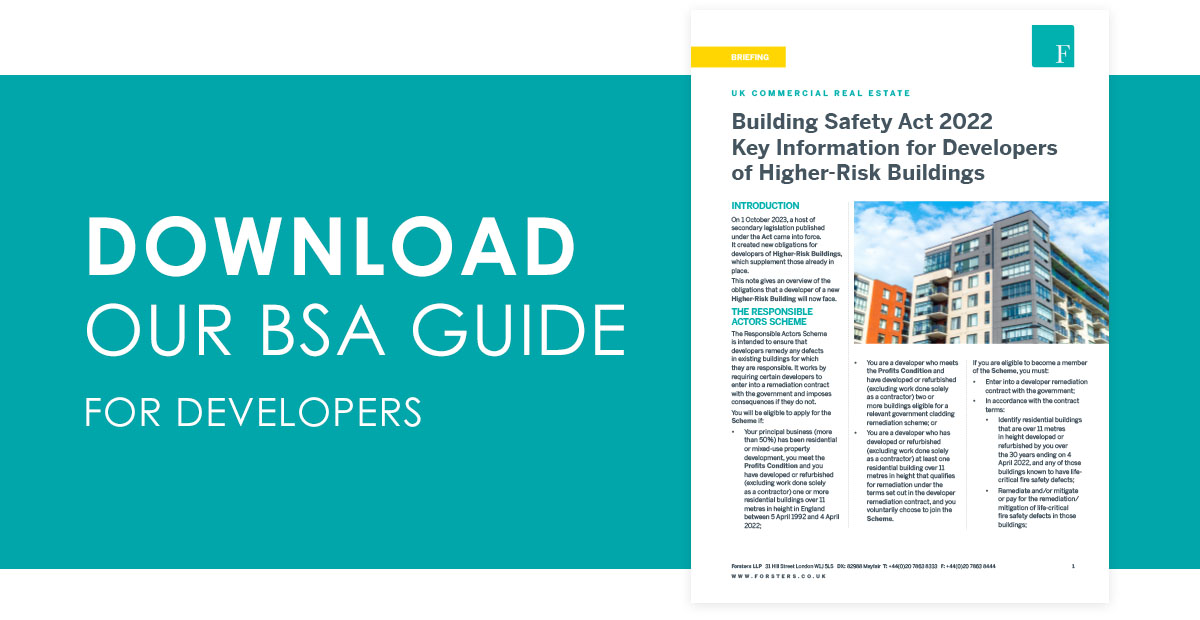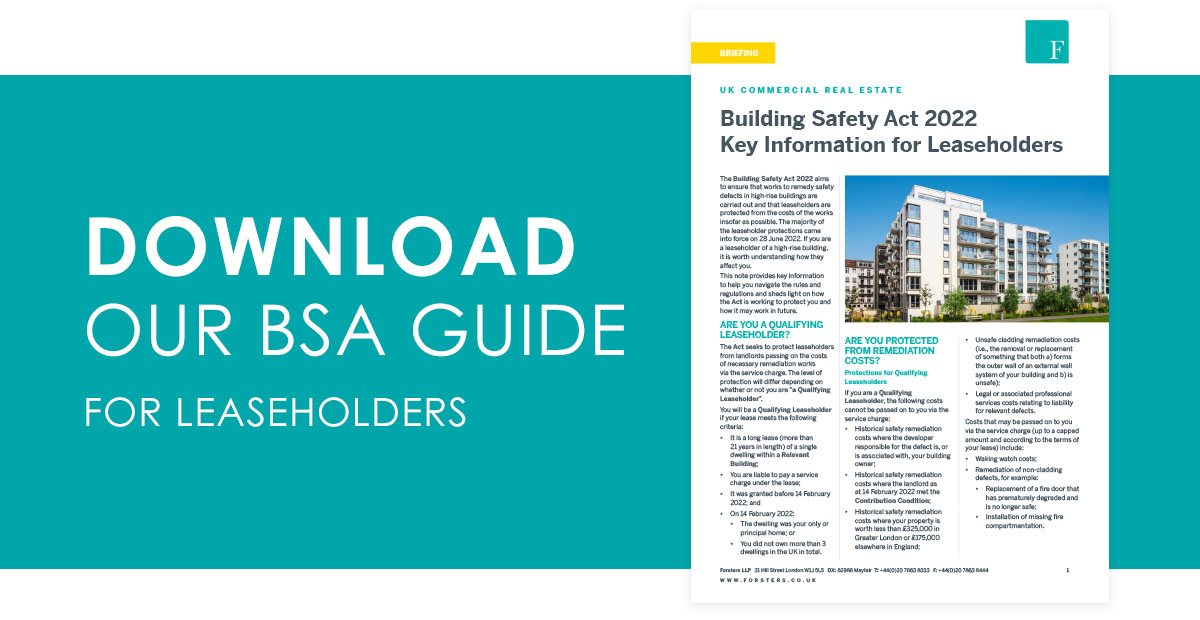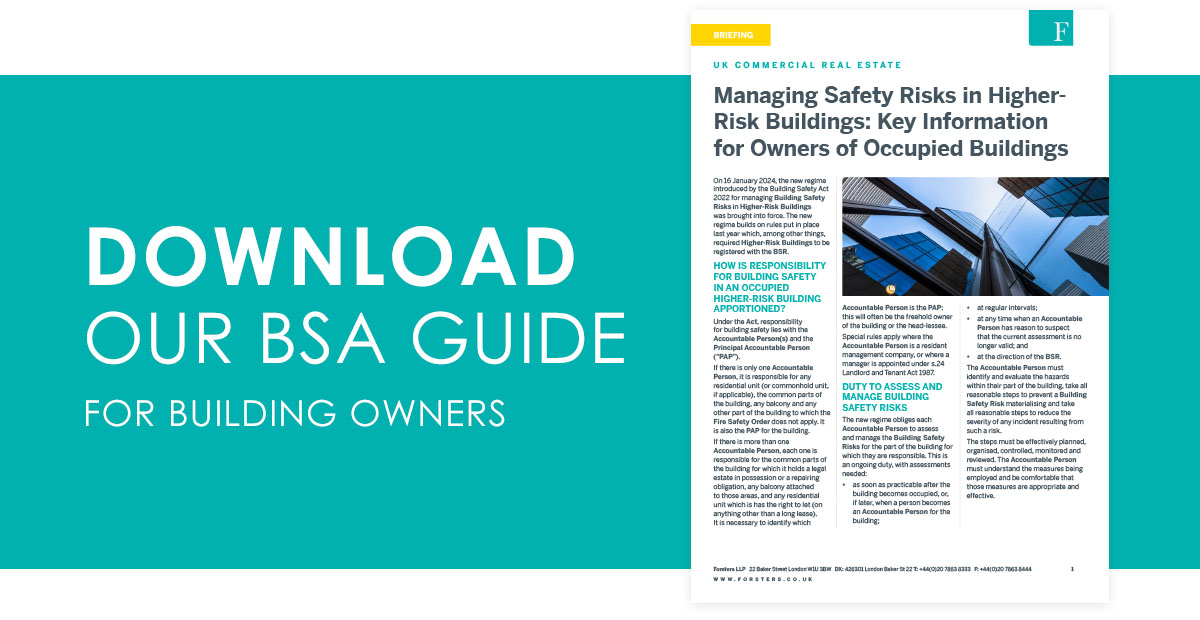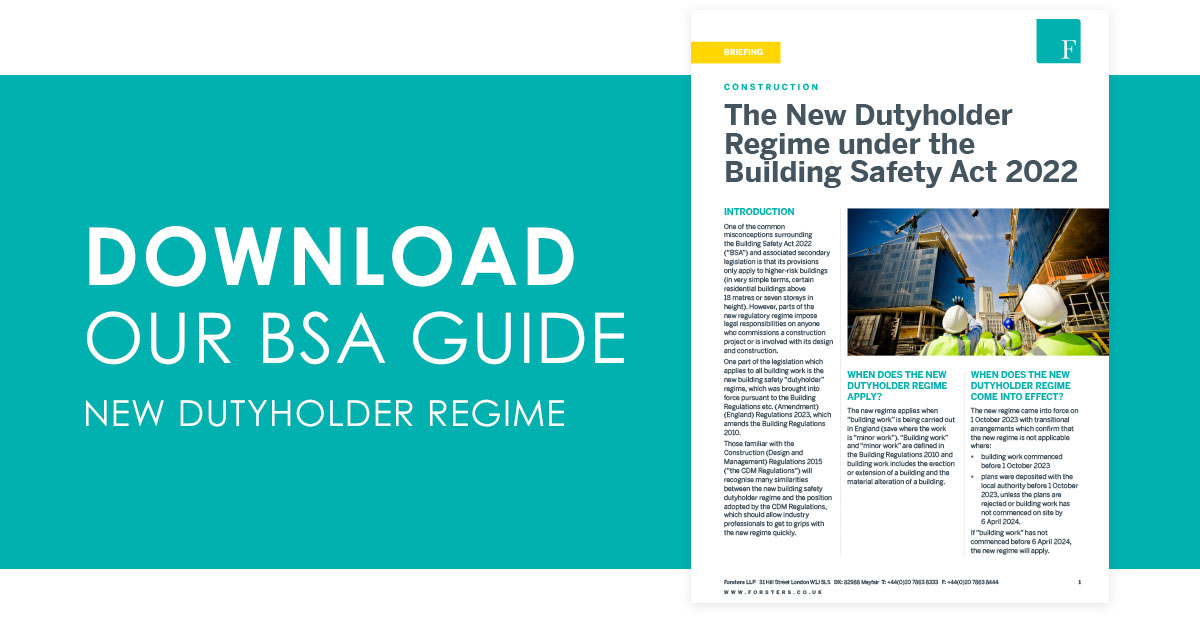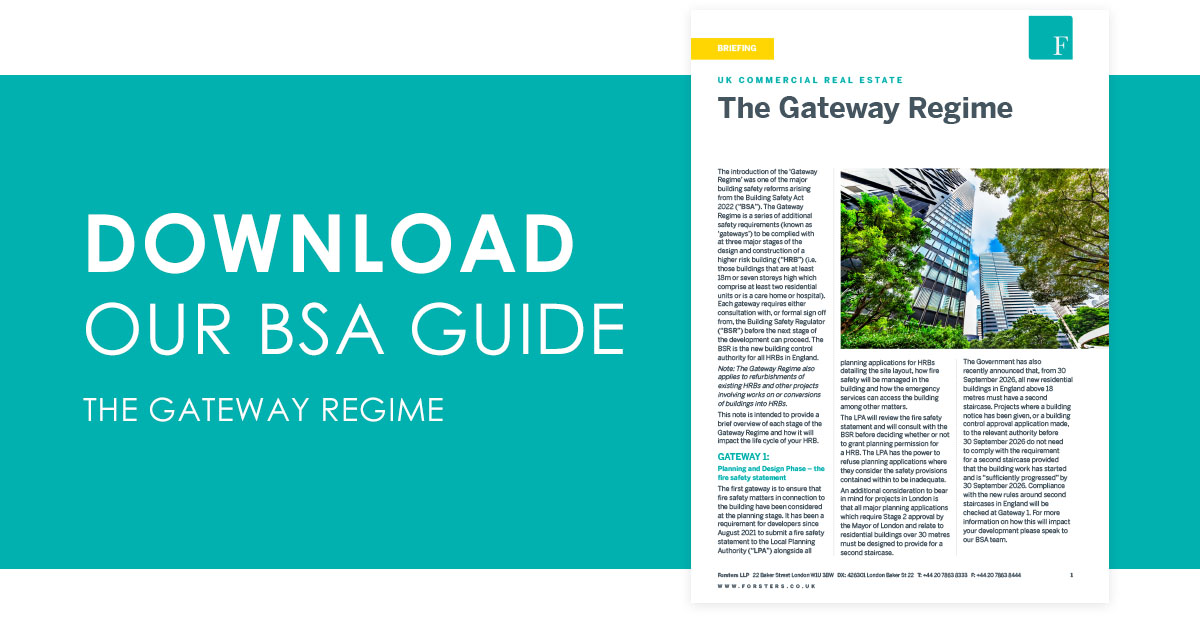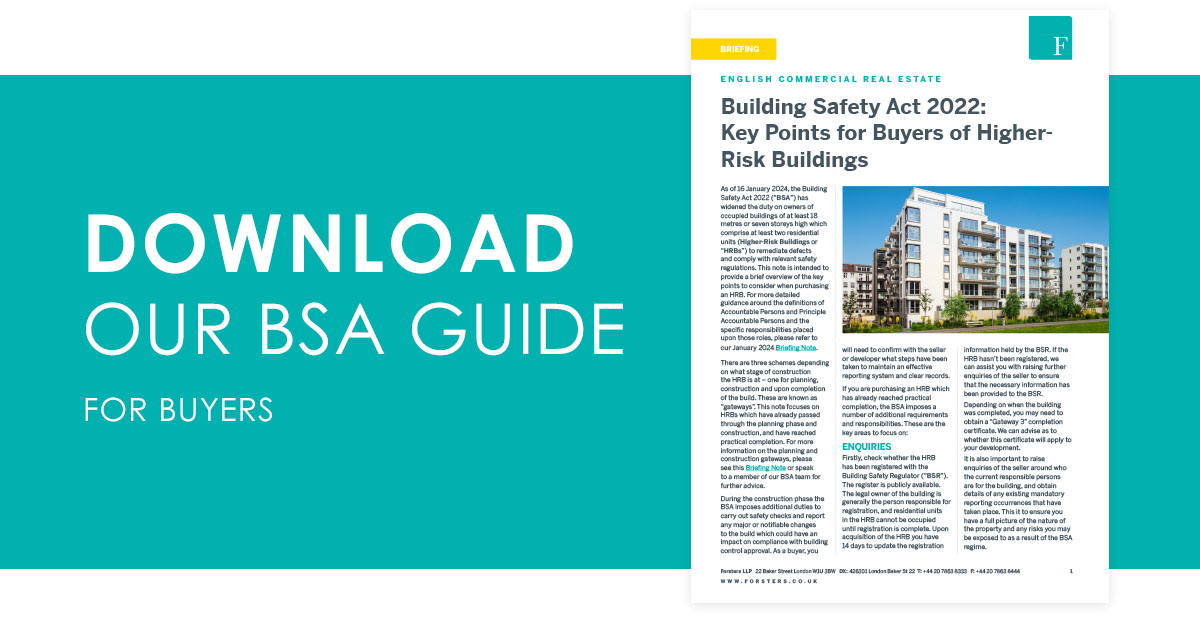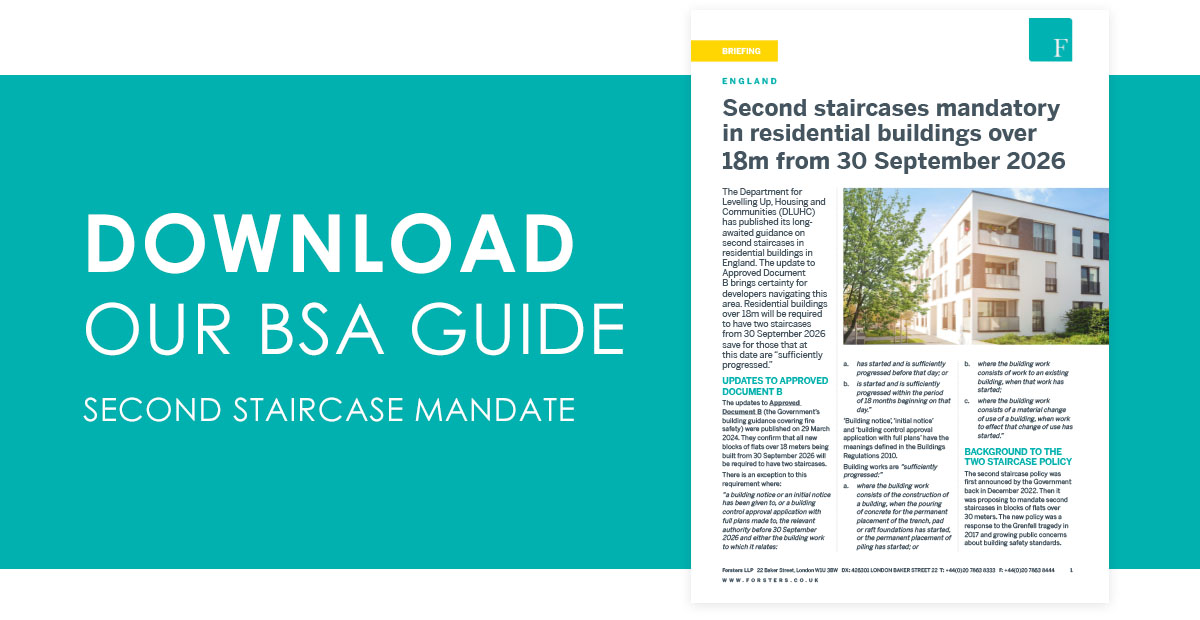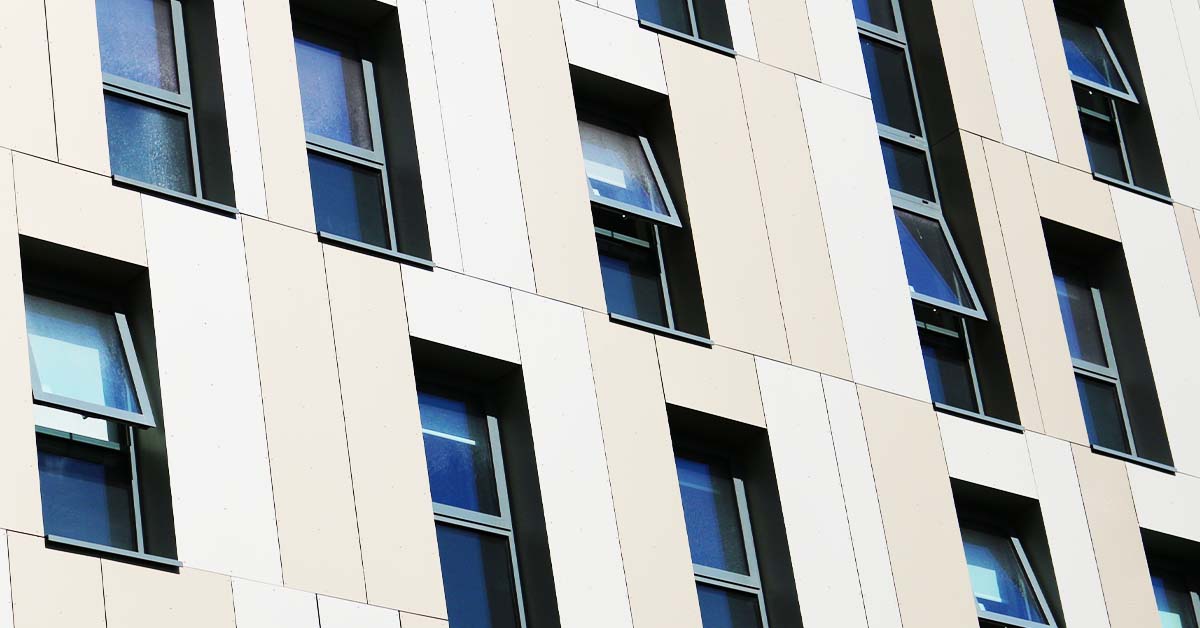The Grenfell Tower fire exposed substantial failings in the construction industry and how it has been regulated. A public inquiry into the disaster is ongoing, but it is apparent there have been serious issues at every level. It is now thought that the defects within external wall systems affect some four million people nationwide and that a large number of the affected buildings are yet to be remediated, some five years later. The fire at a residential block of flats at New Providence Wharf in London in May 2021, which spread quickly and without warning, served as a stark reminder – if one were needed – that the crisis is far from over.
The problem
- Grenfell Tower was built with Aluminium Composite Material ("ACM") panels, as well as other flammable material in its external wall system. The building also had inadequate fire cavity barriers. It was these problems which allowed the fire to spread so quickly.
- Whilst the Government set up a Building Safety Fund, it only applied to buildings over 18 metres high and, despite being increased to £3.5 billion, it was substantially over-subscribed given the scale of the problem. The £30 million Waking Watch Relief Fund, which was also introduced to help finance interim measures whilst buildings are remediated, such as with communal fire alarm systems, did not cure the underlying problem, nor provide any funding for the vast majority affected.
- To add to the problem, the extent of remedial works required is often unclear requiring expensive expert investigation. Reliance by purchasers and building owners on External Wall Surveys (and resulting EWS1 form) is also risky, not only because their purpose is to inform usually risk-averse lenders, but because if the EWS1 proves incorrect, as has happened in various recent reported cases where the EWS1 has been downgraded after further investigations, remedial and interim measures costs are likely to be incurred unnecessarily.
- The new PAS 9980 assessment is a more holistic approach to fire safety which is to be welcomed, but the work required can be time-consuming and the number of individuals qualified to undertake the assessments is limited all of which can add to the delay in making progress to remediate a defective building.
What is being done to solve the problems?
The Building Safety Act 2022 ("the Act") was enacted by the government in wake of the Grenfell Tower tragedy, in order to address substantial failings in the construction industry and how it was regulated. The Act gained Royal Assent in April 2022 and has been brought into force in stages since then. It has introduced significant change across many levels.
Impact of the Act
The Act introduces measures aimed at improving the safety of buildings, and particularly those high-rise buildings defined in the Act as "higher-risk buildings". The key changes in the law brought into force by the Act include the following:
- The introduction of a new building control regime for higher-risk buildings, with three "gateways" that a new building will need to pass through during its construction: at planning application stage, before building works commence and when building works complete.
- A requirement for a higher-risk building to be registered with the new building safety regulator before occupation.
- The planned introduction of a new regime for assessing and managing building safety risks in occupied higher-risk buildings.
- The introduction of new limitation periods for claims under the Defective Premises Act 1972 and the Building Act 1984.
- The introduction of "remediation orders" which, if granted, will require a landlord of a relevant building to remedy specified defects within a set timeframe.
- The introduction of "remediation contribution orders" which, if granted, will require a body corporate to pay for costs incurred in remedying defects to a relevant building. These allow the corporate veil to be pierced, as they can be made against a landlord, the developer of the building, or an "associated" person.
- The introduction of "building liability orders" which, if granted, will extend the specific liabilities of one body corporate to any of its "associates" (including a parent company, a sister company and subsidiary companies) on a joint and several basis. Again, these allow the corporate veil to be pierced and could allow claims to be pursued even where the initial developer is insolvent or dissolved.
- For housing blocks that are over 11m (or 5 storeys tall) tall, the creation of a “waterfall” system whereby the costs of the remedial works flow from the top down. This means that developers are expected to bear the costs of the remedial works in the first instance. If this fails, freeholders are expected to pick up the costs (but will be protected by an affordability test). Finally leaseholders are expected to cover any remaining costs, but they will be protected by a costs cap and they will only be required to meet costs of non-cladding related works where the landlord/superior landlord as at 14 February 2022 was not responsible for the defect.
How Forsters can assist?
Our Construction and Property Litigation teams have expertise and in-depth knowledge in this area and the broader impact that the Act is having on the real estate sector. Our experience allows us to provide tailored, pragmatic and commercially focused advice and solutions to enable our clients to achieve their objectives, including the procurement of any necessary remedial works and the recovery of losses from those responsible for designing and constructing the building. Our clients in this sector include real estate funds, property developers and investors, private individuals, corporate occupiers, family offices and international property companies.
We can assist in providing strategic and legal advice in relation to:
- Compliance with the new building control regime, and the new regime for managing building safety risks in occupied higher-risk buildings.
- Analysis of the cladding and external wall systems on buildings in the context of the previous building regulations and their updated versions, with reference also to the MHCLG Advice Notes and expert reports.
- Carrying out a review of the current position and remedial/interim measures proposals, to include an assessment of lease terms and the relevant legislation.
- The co-ordination of instructions, funding and process for flat owners, including participations agreements.
- The engagement of experts (façade consultants, architects, fire consultants) and arrangements in relation to the EWS1 certificate and PAS 9980 assessments to include the review of the same and advice on the procurement of remedial works.
- Ongoing fire safety obligations, before, during and after completion of remedial works (such as waking watches).
- Construction contracts, warranties (including NHBC) and of the leases for the building (including under service charges) to identify who is responsible and how the cost of remediation will be paid, as well as considering the position in tort to determine whether the developer or original construction team is liable in negligence.
- Contracts and appointments for remedial works, to ensure that the client’s position is protected and that the liquidity of the asset is secure.
- The position under statute, such as the Fire Safety Act 2021 , Building Safety Act 2022 and Defective Premises Act 1972.
- Limitation issues for any claims and arrangements, if necessary, for a standstill agreement with potential defendants.
- Applications to the Government funds.
- Pursuing the culpable parties for damages through negotiation/settlement and/or proceedings at Court or the First-tier Tribunal.
- Challenging service charges relating to remedial works in the Court and/or First-tier Tribunal.
Download our guides on the Building Safety Act 2022
On 1 October 2023, new secondary legislation under the Building Safety Act 2022 (BSA) came into effect. Forsters' Building Safety team has produced 3 briefing sheets designed to help clarify how these legislative updates affect developers, leaseholders and building owners.
Building liability orders lift the corporate veil on developers – Andrew Parker writes for Property Week
Construction Partner and Head of Building Safety, Andrew Parker, has written for Property Week on how, a year on from the passing of the Building Safety Act 2022 (BSA), we are now starting to see the cumulative effect of all the new devices for holding the residential development industry to account for the building safety crisis.
Cladding: Your position and how to future-proof
Construction Partner, Andrew Parker, and Property Litigation Senior Associate, Sarah Heatley, along with Robert Bowker (Tanfield Chambers) and Andrew Webster (formerly of Cumming Group), sat down to discuss key elements of the (then) proposed legislation and the potential impact for the construction and property industries, as well as the wider public.
Andrew Parker Discusses Announcements from the Government Regarding Cladding Costs
Forsters' Head of Cladding, Andrew Parker, appeared on BBC Newsnight discussing what the Housing Minister Michael Gove meant when he stated earlier this week, on 10 January 2022, that he will be “absolutely willing to use legal rules” to make builders pay for the removal of unsafe cladding from buildings between 11-18 metres.
The new government plan to end unsafe cladding: too little, too late?
Well, not enough and not fast enough. Whilst the additional £3.5bn in funding represents a much need injection of cash, it misses the mark in many respects.
Fire Safety and Cladding Podcast
Podcast host, Miri Stickland, talks to Construction partner Andrew Parker, associate Dan Cudlipp and Property Litigation associate Sarah Heatley about the findings and recommendations so far from the ongoing Grenfell inquiry, new legislation coming forward in the form of the Building Safety Bill, practical issues being encountered on sales and refinancings of high-rise residential units and what options may be available to cover the costs of any remediation works required..
- Andrew Parker speaks to the BBC about the latest Building Safety Bill proposals
- The Building Safety Bill
- Ryan Didcock and Sarah Heatley write for the Property Law Journal on the cladding crisis
- Cladding fund papers over residents’ concerns: Andrew Parker writes for The Times
- Leaseholders and cladding: Sarah Heatley writes for Property Reporter
- Defective Cladding - Commercial purchasers/building owners need to beware
- Defective Cladding / Fire Protection - Residential flatowners need to act fast
- The Building Safety Bill and beyond: Emily Holdstock writes for Property Law Journal


